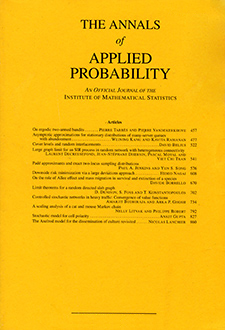Abstract
From its beginning, there have been attempts by physicists to formulate quantum mechanics without requiring the use of wave functions. An interesting recent approach takes the point of view that quantum effects arise solely from the interaction of finitely many classical “worlds.” The wave function is then recovered (as a secondary object) from observations of particles in these worlds, without knowing the world from which any particular observation originates. Hall, Deckert and Wiseman [Phys. Rev. X 4 (2014) 041013] have introduced an explicit many-interacting-worlds harmonic oscillator model to provide support for this approach. In this note, we provide a proof of their claim that the particle configuration is asymptotically Gaussian, thus matching the stationary ground-state solution of Schrödinger’s equation when the number of worlds goes to infinity. We also construct a Markov chain based on resampling from the particle configuration and show that it converges to an Ornstein–Uhlenbeck process, matching the time-dependent solution as well.
Citation
Ian W. McKeague. Bruce Levin. "Convergence of empirical distributions in an interpretation of quantum mechanics." Ann. Appl. Probab. 26 (4) 2540 - 2555, August 2016. https://doi.org/10.1214/15-AAP1154
Information





